As an electrical circuit wiring specialist, it is my duty to ensure the safety and efficiency of all electrical systems. One of the most crucial aspects of this responsibility is splicing wires properly. Splicing refers to the process of connecting two or more wires together, and it is essential for creating a continuous flow of electrical current in a circuit. In this article, we will discuss how to splice electrical circuit wires safely and effectively.
Whether you are installing a new light fixture or repairing an existing electrical system, splicing wires correctly is critical for avoiding potential hazards such as fires or electrocution. By following proper techniques and safety precautions, you can ensure that your electrical circuits are functioning optimally while minimizing any risk of injury or damage. This article will provide step-by-step guidance on how to splice wires effectively and efficiently while taking into consideration the specific requirements of different types of circuits and wiring systems.
Understanding The Basics Of Electrical Circuits
An electrical circuit is like a network of roads that carries electricity. Just as different roads can be made of different materials, electrical circuits can be made of different materials that affect their performance. Understanding the basics of electrical conductivity is essential when working with electrical circuits. Conductivity is the ability of a material to allow electric charges to flow through it.
Another important concept in understanding electrical circuits is resistance. Resistance is the opposition to the flow of electric current through a conductor. Different materials have varying levels of resistance, which can impact how well an electrical circuit functions. Copper wire, for example, has low resistance and is commonly used in wiring.
When splicing wires in an electrical circuit, it’s crucial to have a solid understanding of these basic concepts. A splice should maintain the continuity and integrity of the circuit while minimizing any potential disruptions to its function caused by increased resistance or poor conductivity. In the next section, we’ll explore how to identify different types of wires so that you can confidently work with them in your splicing projects.
Identifying Different Types Of Wires
- Electrical wiring typically involves connecting wires together to form a circuit.
- Different types of wires can be identified by their insulation material, cross-sectional shape, and size.
- Color coding is often used to differentiate between different types of wires, such as red for hot wires and black for neutral wires.
- The wire gauge size is also important as it determines the current-carrying capacity of the wire.
- Splicing, or connecting two wires together, is often done when installing electrical wiring.
- It is important to ensure that the correct type and size of wire is used when splicing in order to maintain the integrity and safety of the circuit.
Types Of Wires
Understanding the different types of wires is crucial when splicing electrical circuit wires. It is important to identify the wire gauge and to follow wire color codes to ensure safety and efficiency in the electrical system. Wire gauge refers to the diameter of a wire and is measured in American Wire Gauge (AWG). The smaller the number, the thicker the wire. A thicker wire can handle more current without overheating, which reduces the risk of fire hazards.
Wire color codes are standardized for easy identification and consistency across different electrical systems. In general, black wires are used for hot or live wires, white or gray wires for neutral wires, green or bare copper wires for ground wires, and red or blue wires for traveler or switch legs. However, it is important to note that some variations may exist based on local codes and specific applications. By following these color codes, one can easily distinguish between different types of wires during splicing.
In conclusion, understanding wire gauge and color codes is essential in identifying different types of wires during splicing electrical circuit wires. Using proper techniques ensures that electrical systems function safely and efficiently while minimizing risks such as fire hazards caused by overheated circuits. As an electrical circuit wiring specialist, it is important to remain up-to-date with local codes and guidelines while prioritizing safety measures to serve others effectively.
Wire Color Coding
As an electrical circuit wiring specialist, it is important to have a deep knowledge of wire color coding as part of identifying different types of wires. Wire color codes are essential for easy identification and consistency across various electrical systems. Different colors denote specific functions such as hot or live wires, neutral wires, ground wires, and switch legs. While the standard wire color codes use black, white or gray, green or bare copper, and red or blue colors; some variations may exist based on local codes and specific applications.
Understanding wire insulation materials used in electrical wiring is also crucial in identifying different types of wires. Insulation materials protect the wire conductor from environmental factors that can cause damages or accidents. Common insulation materials include thermoplastic, polyethylene, rubber, and Teflon. The choice of insulation material depends on the application’s temperature range and other environmental factors that could affect the wire’s performance.
Wire gauge sizing is another critical aspect to consider when identifying different types of wires during splicing electrical circuit wires. The American Wire Gauge (AWG) measures the diameter of a wire with a lower number indicating thicker wires that can handle more current without overheating. Using proper techniques while considering wire gauge sizing ensures that electrical systems function safely and efficiently while minimizing risks such as fire hazards caused by overheated circuits. As an electrical circuit wiring specialist serving others effectively requires keeping up-to-date with local codes and guidelines while prioritizing safety measures at all times when working with different types of wires.
Wire Gauge Sizing
As an electrical circuit wiring specialist, it is important to have a comprehensive understanding of the wire gauge sizing. The diameter of a wire is critical in determining its ability to handle current without overheating. Using the proper wire gauge sizing techniques ensures that electrical systems function safely and efficiently while minimizing risks such as fire hazards caused by overheated circuits.
The importance of wire gauge sizing cannot be overstated because it determines the amount of current that a wire can carry without overheating or causing damage. Factors affecting wire gauge selection include the length of the wire, the type of insulation, and environmental factors such as temperature and humidity. A lower number on the American Wire Gauge (AWG) indicates thicker wires that can handle more current without overheating.
As an electrical circuit wiring specialist, it is essential to understand how different factors affect wire gauge selection when splicing different types of wires. By using proper techniques while considering wire gauge sizing, one can ensure that electrical systems function safely and efficiently while minimizing risks. It is crucial to keep up-to-date with local codes and guidelines while prioritizing safety measures at all times when working with different types of wires.
Choosing The Right Tools For Splicing
When it comes to splicing electrical circuit wires, choosing the right tools is crucial in ensuring that the job is done safely and efficiently. As a wiring specialist, it is your responsibility to equip yourself with the necessary tools for the task at hand.
First and foremost, a wire stripper is essential for stripping insulation off wires without damaging them. Using pliers or other makeshift tools can result in frayed wire strands which can lead to poor connectivity and create a hazard. Additionally, needle-nose pliers are useful in bending wires into shape or holding them steady while you work on them.
Next, a soldering iron and solder are required for permanently joining wires together. This tool melts the solder onto the joint, creating a strong bond between the two wires. It’s important to note that improper use of a soldering iron can cause burns or start fires if not handled correctly.
In addition to these two primary tools, there are several other items that can assist in making the process smoother:
- Wire connectors- used to join multiple wires together
- Heat shrink tubing- used to insulate connections after splicing
- Multimeter- used to measure voltage and ensure proper connectivity
Common mistakes when splicing include using improper tools or techniques which can result in damage to both the wire and surrounding components. Safety measures such as wearing gloves and safety glasses should always be taken when working with electrical wiring.
As we move forward in this guide, we will discuss preparing the wires for splicing and best practices for joining them together using the appropriate tools.
Preparing The Wires For Splicing
After selecting the appropriate tools for splicing, the next step is to prepare the wires. Wire gauge selection is vital when it comes to electrical circuit wiring. The correct wire gauge will ensure that the circuit can handle the load and avoid overheating, which can lead to a fire hazard. It’s essential to use a wire gauge that matches or exceeds the amperage of your circuit.
Once you’ve selected the right wire gauge, it’s time to strip the insulation from both ends of the wires. Wire stripping techniques may vary based on personal preference and experience, but there are some general rules to follow. First, make sure that you have enough exposed wire for a secure connection. Typically, 1/2 inch of exposed wire is sufficient for most connections. Secondly, be careful not to damage or nick the actual wire when stripping off the insulation.
Properly preparing your wires for splicing is crucial in ensuring a safe and efficient electrical circuit. When splicing wires together, it’s important to have a good connection between them so that electricity can flow without interruption. In the next section, we’ll discuss in detail how to strip the wire insulation from your wires before they are ready for splicing.
Stripping The Wire Insulation
According to a study conducted by the National Fire Protection Association, electrical fires are responsible for an estimated 47,820 home fires in the United States each year. The majority of these fires are caused by faulty wiring or equipment. Proper insulation stripping techniques can greatly reduce the risk of electrical fires and ensure that your wiring is safe and reliable.
When it comes to stripping wire insulation, there are several common mistakes that should be avoided. One of the most common mistakes is using a knife or other sharp object to strip the insulation. This can result in accidental cuts to the wire, which can lead to short circuits and other problems. Another mistake is stripping too much insulation from the wire, which can expose too much of the conductor and increase the risk of electric shock.
To avoid these mistakes, it is important to use proper insulation stripping techniques. Here are some tips:
- Use a quality wire stripper tool that is designed for the gauge of wire you are working with.
- Place the wire in the correct slot on the stripper tool and gently squeeze until you feel resistance.
- Rotate the stripper tool around the circumference of the wire twice to ensure a clean cut.
- Pull off the insulation carefully to avoid damaging any strands of wire.
- Check that you have stripped just enough insulation before proceeding with your wiring project.
Stripping wire insulation is an essential step in splicing electrical circuit wires together. By following proper techniques and avoiding common mistakes, you can ensure that your wiring projects are safe and reliable. In our next section, we will discuss how to properly twist wires together for a secure connection without damaging them.
Twisting The Wires Together
One of the most common methods of splicing electrical circuit wires is twisting them together. This technique has been used for decades and remains popular because of its simplicity and reliability. Twisting wires together allows for a solid connection, ensuring that current flows through the circuit without interruption. It is important to note that while this method is straightforward, it does require some skill to achieve a proper twist.
Advantages of twisting wires vs using connectors include cost-effectiveness and durability. Connectors can be expensive, especially when multiple connections are required. Additionally, connectors can add bulk to the circuit, making it difficult to fit in tight spaces. In contrast, twisted connections are compact and take up minimal space. Furthermore, twisted connections are less prone to failure than connectors since they do not have any moving parts or external components that can wear down over time.
Tips for achieving a proper twist in electrical wires include stripping the insulation off each wire before twisting them together. The stripped part should be long enough to wrap around the other wire one and a half times. This ensures that there is enough surface area for contact between the two wires. When twisting, hold both wires firmly in one hand and use pliers or another tool to grip the ends of the wires and twist them together tightly without breaking either wire’s strands.
In summary, twisting electrical circuit wires together provides numerous advantages over using connectors such as cost-effectiveness and durability. Achieving a proper twist requires some skill but following specific tips like stripping insulation off each wire before twisting can ensure success. The next step in splicing electrical circuit wires is applying wire connectors which we will explore in detail in the subsequent section.
Applying Wire Connectors
As an electrical circuit wiring specialist, it is important to apply wire connectors properly. While some may view this as a tedious task, it is imperative to ensure the safety and functionality of any electrical system. So let’s get started!
Firstly, proper crimping techniques are crucial when applying wire connectors. This involves using the right tools to securely fasten the connector onto the wire. A loose connection can lead to power loss or even dangerous situations such as electrical fires. Take your time with this step and make sure each connection is tight and secure.
Secondly, selecting the proper wire size is just as important as crimping techniques. Choosing the wrong size can lead to overheating and potentially cause damage to equipment or even harm individuals in close proximity. Always refer to industry standards and guidelines when choosing wire sizes for specific applications. Remember, safety always comes first!
Now that we’ve covered proper crimping techniques and wire size selection, let’s move on to using wire nuts. These handy little devices are used to connect two or more wires together safely and efficiently without the need for soldering. Stay tuned for our next section where we’ll cover how to use them effectively!
Using Wire Nuts
When splicing electrical circuit wires, one common method is using wire nuts. These are plastic caps that twist onto the ends of the wires to connect them. To use wire nuts, first strip about ¾ inch of insulation from the end of each wire. Next, hold the two stripped ends together side by side and twist on the wire nut in a clockwise motion until it is tight.
However, there are some common mistakes that people make when using wire nuts. One mistake is not stripping enough insulation off the wires before twisting on the wire nut. This can lead to a poor connection and potential safety hazards. Another mistake is over-tightening the wire nut, which can cause damage to the wires and create an even bigger safety risk.
If you encounter any issues with your electrical circuit after splicing wires with wire nuts, there are troubleshooting techniques you can use. First, double-check all connections to ensure they are properly secured and tightened. Next, use a voltage tester to check for any possible short circuits or faulty wiring. If you still cannot identify the issue, it may be best to consult with a professional electrician for further assistance.
Transition: Now that you have learned how to splice wires using wire nuts and how to troubleshoot any issues that may arise, let’s move on to another splicing method – soldering the wires together for a more permanent connection.
Soldering The Wires
When splicing electrical circuit wires, soldering is a reliable method to ensure a sturdy and lasting connection. Soldering involves melting a metal alloy onto the surface of the wires, which creates a bond that is both electrically conductive and mechanically strong. Soldering techniques require some skill and knowledge, but with practice and proper safety precautions, anyone can become proficient at it.
To begin with, it is important to choose the right type and size of solder for the job. Lead-free solder is recommended because it is safer for the environment and for those handling it. The diameter of the solder should match the diameter of the wire being spliced. Preparing the wires prior to soldering includes stripping off insulation from both ends of each wire, twisting them together firmly, and applying flux (a chemical agent that cleans surfaces) to promote adhesion between the wires and solder.
Safety precautions must be taken when working with hot tools like soldering irons. Always wear protective gear such as gloves, goggles, and heat-resistant clothing. Keep flammable materials away from the work area as well as unplugging or turning off tools when not in use. To avoid burns or fires due to accidental contact with heated components or electrical current during operation, always double-check that everything has been properly grounded before starting work on your electrical project.
Transition: Now that you have learned how to properly solder your electrical circuit wires together using safe techniques let’s move on to heat-shrinking the connection.
Heat-Shrinking The Connection
Like a surgeon carefully suturing an incision, heat-shrinking the connection is a delicate process that requires precision and attention to detail. This technique involves using heat to shrink a tube of insulation around the spliced wires, creating a waterproof seal that protects against moisture and corrosion. The advantages of heat shrinking are numerous, including increased durability, improved conductivity, and reduced risk of electrical fires.
To properly heat shrink a connection, first strip the ends of the wires and twist them together tightly. Then slide a length of heat-shrink tubing over the splice, making sure it covers at least 1/4 inch on either side. Use a heat gun or lighter to apply heat evenly along the length of the tubing until it shrinks snugly around the wires. Be careful not to overheat the tubing or hold the flame too close, as this can cause damage to both the wires and the insulation.
When applying this technique, there are several tips worth keeping in mind to ensure optimal results. For instance, always use tubing with an appropriate diameter for your wire gauge to prevent gaps or air pockets. Additionally, be sure to clean the wires thoroughly before splicing them together to avoid any debris or contaminants that could interfere with conductivity. Finally, check your connections carefully after heating them to ensure they are fully sealed and free from any defects.
As important as it is to know how to splice circuit wires correctly, knowing how to secure those connections is equally crucial. By following these simple techniques and tips for heat shrinking your splices, you can enjoy all the benefits of this reliable method while ensuring your electrical circuits remain safe and functional for years to come. In our next section on testing electrical circuits , we will explore further steps towards ensuring optimal performance from your wiring system.
Testing The Electrical Circuit
After splicing electrical circuit wires, it is crucial to ensure that they are functioning correctly. This is where testing the electrical circuit comes in handy. The importance of continuity testing cannot be overstated as it helps to identify any breaks or open circuits in the wiring.
There are different methods of circuit testing, such as using a multimeter or a continuity tester. A multimeter measures voltage, current, and resistance levels in the circuit while a continuity tester checks for continuity by sending an electric signal through the circuit. It is recommended to use both methods for accurate results.
Performing regular tests on your electrical circuits can prevent accidents like short circuits or electrocution. It also helps to identify faults before they escalate into more significant problems that may require expensive repairs or replacements. As an electrical circuit wiring specialist, I always advise my clients to test their circuits regularly to ensure their safety and avoid costly damages.
Next, we will discuss troubleshooting common splicing issues that may arise during the process of splicing electrical circuit wires. By understanding these issues and how to resolve them, you can complete your wiring project with ease and confidence.
Troubleshooting Common Splicing Issues
As an electrical circuit wiring specialist, splicing wires is a fundamental skill that is necessary for any electrical project. Just like how a surgeon must be careful when cutting and suturing, one must handle the wires with care to ensure that the circuit operates efficiently. However, common mistakes can occur during this process that can lead to complications.
One of the most frequent issues encountered during splicing is improper connections. This problem may arise due to incorrect stripping of insulation or poor positioning of wires. Troubleshooting techniques for this would involve checking the connection by pulling on the wire gently to see if it’s secure or using a continuity tester to verify conductivity between the two wires. Proper maintenance involves ensuring that all connections are tightly secured and periodically checked for signs of damage.
Another problem that may occur is short circuits, which happen when two bare wires touch each other unintentionally. To prevent future issues, it’s essential to check for exposed or frayed wires before proceeding with splicing. If any are present, they should be trimmed back until no exposed metal is visible. It’s also crucial to use insulated connectors and tape to prevent accidental contact between wires.
As an electrical circuit wiring expert, ensuring safety precautions are paramount when working with electricity. Always turn off power sources before beginning work and wear protective gear such as gloves and goggles. Furthermore, always follow manufacturer instructions regarding wire size and choose appropriate connectors for the job at hand. By following these guidelines and taking preventive measures against common mistakes, you can ensure successful splicing every time while minimizing potential hazards in your workspace.
Ensuring Safety Precautions
When it comes to splicing electrical circuit wires, safety should be the top priority. Electrical hazards can cause serious injuries or even death if proper safety measures are not taken. As an electrical circuit wiring specialist, I cannot emphasize enough the importance of protective equipment and common safety hazards to avoid.
Protective equipment is essential when working with electrical circuits. It includes gloves, goggles, helmets, and protective clothing made of non-conductive materials. Insulated tools must also be used to prevent electric shock. These items are designed to protect the electrician from live currents and reduce the risk of accidents on the job.
There are several common safety hazards that must be avoided when splicing electrical circuit wires. One of them is working on live circuits without proper training or supervision. Other hazards include inadequate grounding, overloaded circuits, and improper use of extension cords. These risks can be minimized by following safety guidelines and ensuring that all equipment is in good condition before starting any work.
To ensure safe splicing practices, it is crucial to follow a set of rules that promote effective and efficient work while minimizing hazards. The following list highlights some tips for safe splicing:
- Turn off the power supply before starting any work.
- Use insulated tools specifically designed for electrical work.
- Ensure that all equipment is in good working condition before use.
- Follow standard procedures for testing connections after splicing.
By following these tips and taking appropriate precautions, we can ensure a safe environment for both workers and customers alike when performing electrical circuit wire splicing tasks. In the next section, we will delve into more details on how to splice wires effectively and efficiently without compromising safety standards in any way possible.
Tips For Effective And Efficient Splicing
When splicing electrical circuit wires, it is important to choose the right materials. This includes not only the wires themselves, but also the insulation and the connectors. Proper preparation of the wires is also essential, including stripping the insulation and twisting the strands together. Once the splice is in place, it should be secured in order to ensure a proper electrical connection. This can be done with heat shrink tubing or electrical tape. Lastly, it is important to consider the environmental conditions the splice will be exposed to and use the appropriate materials to ensure the splice holds up in the long term.
Choosing Materials
As an electrical circuit wiring specialist, it is important to understand the importance of choosing appropriate materials for effective and efficient splicing. The right materials play a crucial role in maintaining the stability and reliability of electrical connections. Factors to consider when choosing materials include the environmental conditions where the splice will be installed, the voltage and current rating of the circuit, and the type of wire being spliced.
Examples of common materials used in splicing electrical circuits include wire nuts, crimping tools, soldering equipment, and heat shrink tubing. Wire nuts are easy to use and come in different sizes to accommodate various wire gauges. Crimping tools are ideal for applications that require stronger connections, such as automotive wiring or marine electronics. Soldering equipment is useful for creating permanent connections that can withstand vibrations or extreme temperatures. Heat shrink tubing provides additional insulation to protect against moisture and other elements.
When choosing materials for splicing electrical circuits, it is important to evaluate each factor carefully before making a selection. For example, if the splice will be installed in a damp environment, it may be necessary to choose materials that have corrosion-resistant properties. Similarly, if the circuit has high voltage or current ratings, it may be necessary to use specialized tools that can handle these requirements. By taking into account these factors when selecting materials, you can ensure reliable and safe electrical connections that will last for years to come.
In conclusion, selecting appropriate materials is crucial for effective and efficient splicing of electrical circuit wires. Understanding factors such as environmental conditions and voltage/current ratings can help you choose the right tools and equipment for optimal results. Whether you opt for wire nuts or crimping tools or soldering equipment or heat shrink tubing, make sure they meet your specific needs so that you can achieve secure electrical connections with ease!
Preparing Wires
Wire splicing techniques are essential in the electrical circuit wiring industry. Preparing wires is a crucial step in ensuring effective and efficient splicing. The process of preparing wires involves several steps that guarantee safety, reliability, and longevity of the connection.
Before preparing wires, it is important to observe wire splicing safety precautions. These include turning off the power source, wearing protective gear such as gloves and goggles, and ensuring the workspace is clean and dry. After taking these precautions, strip approximately 3/4 inch of insulation from each wire to reveal the copper strands underneath. Then twist the exposed copper strands together tightly to form a single conductor for connection.
After twisting the exposed copper strands together securely, add a connector or other suitable material that provides additional support and insulation against moisture or other elements. It is important to follow manufacturer instructions on how to use these materials correctly for optimal results. Following these steps will ensure that you have properly prepared your wires for effective and efficient splicing that will last for years to come.
Securing Splice
After preparing wires for splicing, it is crucial to secure the connection properly. The importance of insulation cannot be overstated in this process. Insulation prevents moisture and other elements from corroding the wire connection, which can lead to electrical issues or even fire hazards. There are various types of wire connectors available, such as crimp connectors and solder sleeves, that provide additional support and insulation against environmental factors.
It is essential to choose the right type of connector based on the application’s requirements and ensure that it is installed correctly. Crimp connectors require a crimping tool to compress and deform the metal collar around the wires tightly. Solder sleeves use heat to melt the solder inside the sleeve, creating a strong bond between the wires. Regardless of which connector you choose, following manufacturer instructions carefully will ensure optimal results.
In conclusion, securing splice effectively and efficiently ensures a reliable electrical circuit wiring system while minimizing safety risks. Choosing appropriate materials such as suitable wire connectors and following manufacturer instructions plays a crucial role in achieving this goal. Properly secured connections prevent electrical issues or fire hazards, making it vital to pay attention to detail when securing splice in any electrical circuit wiring project.
Best Practices For Maintaining Electrical Systems
Effective and efficient splicing is an important aspect of maintaining electrical safety in any building or premises. However, even the best splicing job can be undone if the electrical system is not properly maintained. This is why it is crucial for individuals to follow best practices for maintaining their electrical systems.
First and foremost, it is important to regularly inspect all electrical components and wiring for any signs of wear or damage. Any frayed wires or damaged components should be immediately replaced to minimize the risk of electrical hazards. It is also important to ensure that all electrical panels and outlets are properly labeled, so that individuals can quickly identify which circuits need to be turned off in case of an emergency.
Another key practice for maintaining electrical safety is to avoid overloading circuits. Overloading circuits can cause overheating, which can lead to fires or other hazards. As such, it is important to never exceed a circuit’s maximum amperage rating and to distribute power loads evenly across multiple circuits if necessary.
In summary, while effective splicing techniques are important for ensuring proper electrical function, they must be coupled with proper maintenance practices in order to maintain electrical safety and minimize hazards. By regularly inspecting components for wear and damage, properly labeling panels and outlets, avoiding overloading circuits, and following other best practices for system maintenance, individuals can help ensure the long-term safety and reliability of their electrical systems.
Conclusion
Splicing electrical circuit wires is a complex and essential task. It requires a thorough understanding of the basics of electrical circuits, identification of different types of wires, and the use of appropriate tools. The process involves preparing the wires for splicing, stripping wire insulation, troubleshooting common splicing issues, and ensuring safety precautions.
To effectively splice electrical circuits, it is crucial to follow best practices for maintaining the system. This includes regular maintenance and inspection to prevent damage or wear and tear. By following these steps, you can ensure that your electrical systems operate at optimal levels with minimal risk of malfunction or danger.
As an experienced electrical circuit wiring specialist, I urge all individuals handling these tasks to take caution and work diligently to ensure safe and effective results. Whether you are working on a small home project or a large industrial application, proper splicing techniques are critical for maintaining safety and reliability in your electrical systems. With careful attention to detail and adherence to best practices, you can achieve efficient and effective splices that will support the long-term health and durability of your systems.
Image Credits

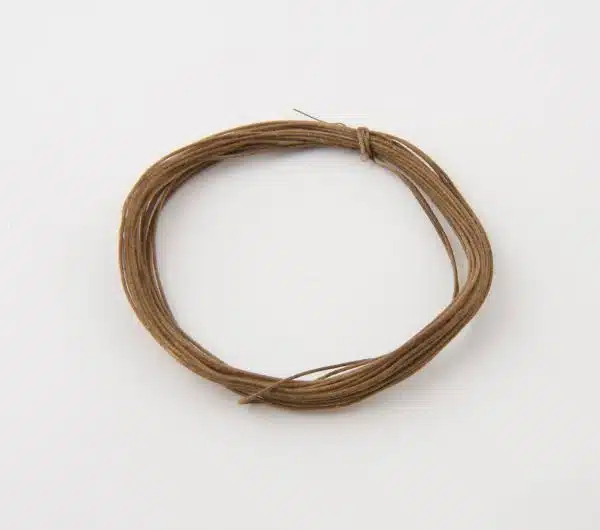

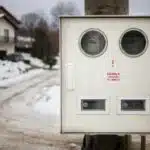
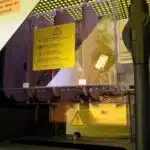
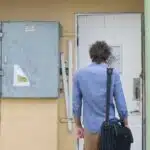



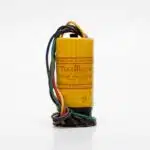
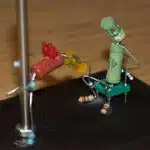

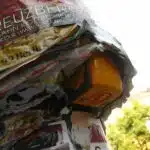

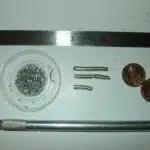
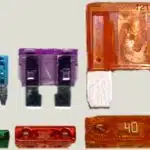
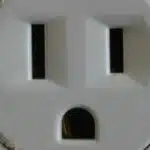
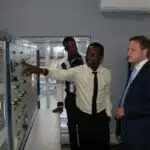





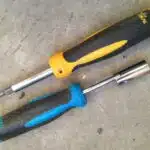

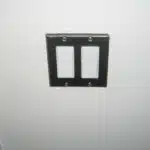
![How To Replace A Single-Pole Wall Switch 26 '... All in all it's just another [switch] in the wall.' ...](https://green-life.blog/wp-content/uploads/2023/05/17xmP5qMtVjq-150x150.jpg.webp)


